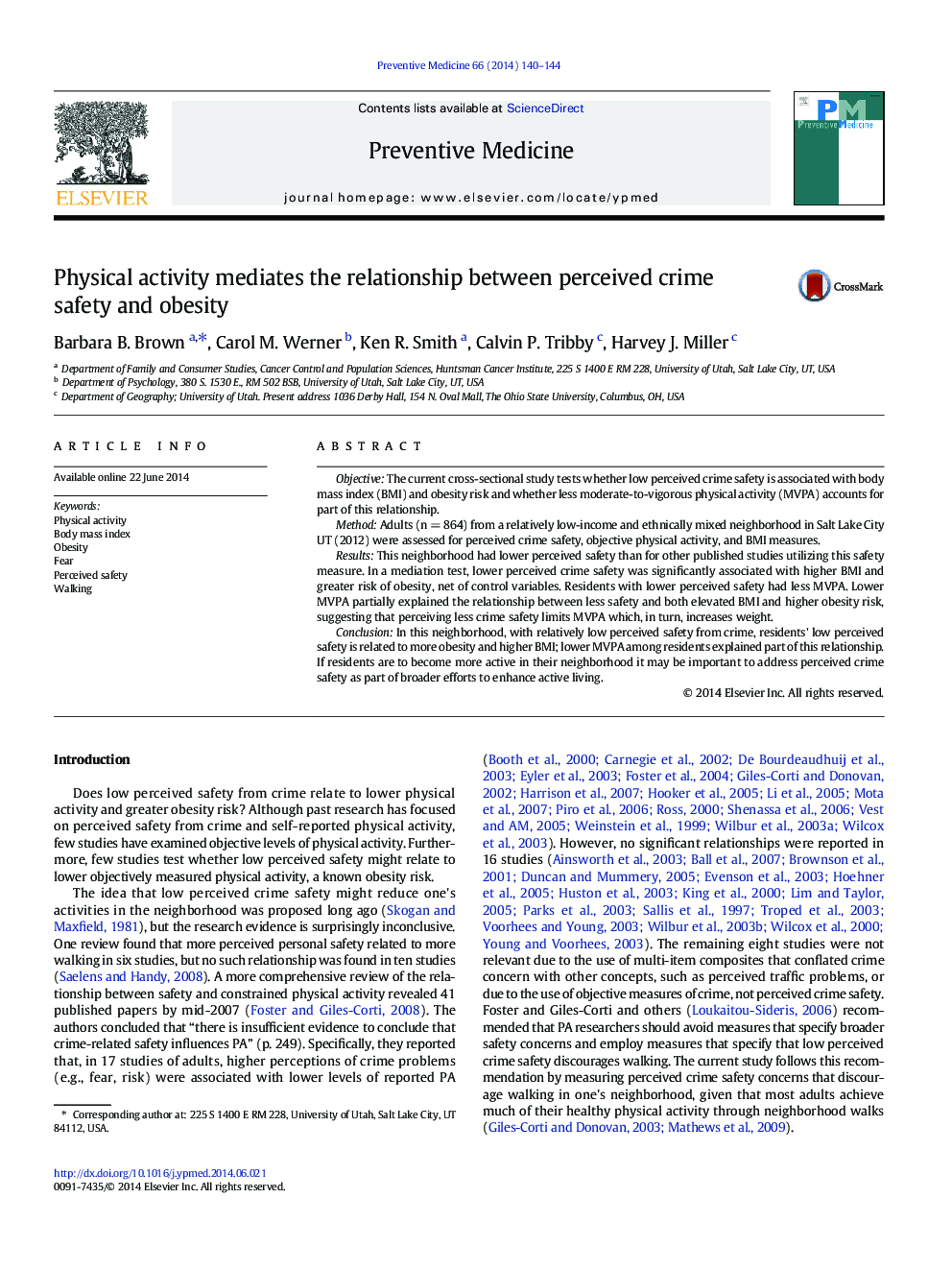| Article ID | Journal | Published Year | Pages | File Type |
|---|---|---|---|---|
| 6047045 | Preventive Medicine | 2014 | 5 Pages |
â¢We found that low perceived safety from crime relates to BMI/obesity.â¢Moderate-to-vigorous physical activity mediates the safety to weight relationship.â¢These relationships include objectively measured activity and BMI.â¢We suggest that perceived safety improvements are needed for active living.
ObjectiveThe current cross-sectional study tests whether low perceived crime safety is associated with body mass index (BMI) and obesity risk and whether less moderate-to-vigorous physical activity (MVPA) accounts for part of this relationship.MethodAdults (n = 864) from a relatively low-income and ethnically mixed neighborhood in Salt Lake City UT (2012) were assessed for perceived crime safety, objective physical activity, and BMI measures.ResultsThis neighborhood had lower perceived safety than for other published studies utilizing this safety measure. In a mediation test, lower perceived crime safety was significantly associated with higher BMI and greater risk of obesity, net of control variables. Residents with lower perceived safety had less MVPA. Lower MVPA partially explained the relationship between less safety and both elevated BMI and higher obesity risk, suggesting that perceiving less crime safety limits MVPA which, in turn, increases weight.ConclusionIn this neighborhood, with relatively low perceived safety from crime, residents' low perceived safety is related to more obesity and higher BMI; lower MVPA among residents explained part of this relationship. If residents are to become more active in their neighborhood it may be important to address perceived crime safety as part of broader efforts to enhance active living.
